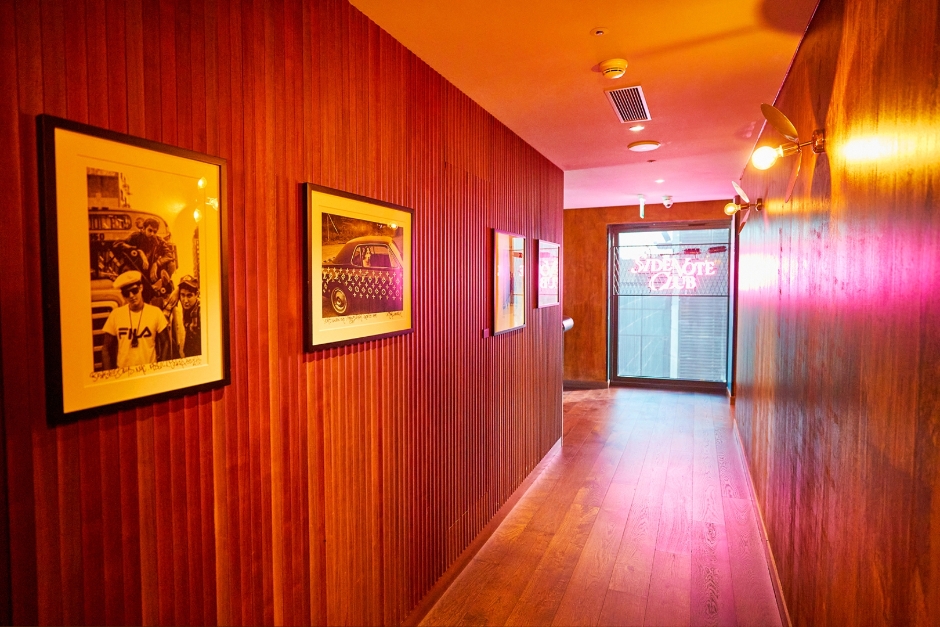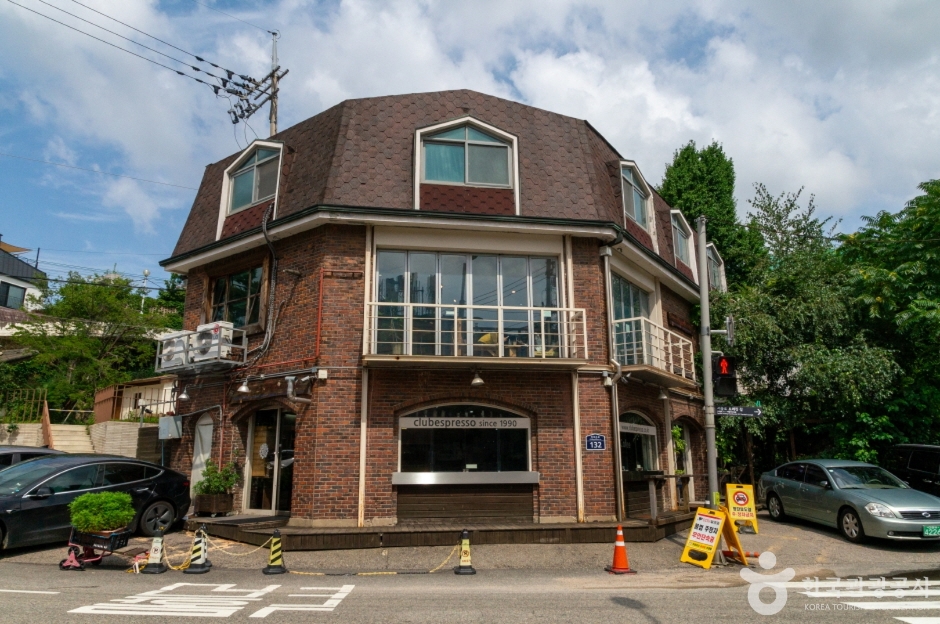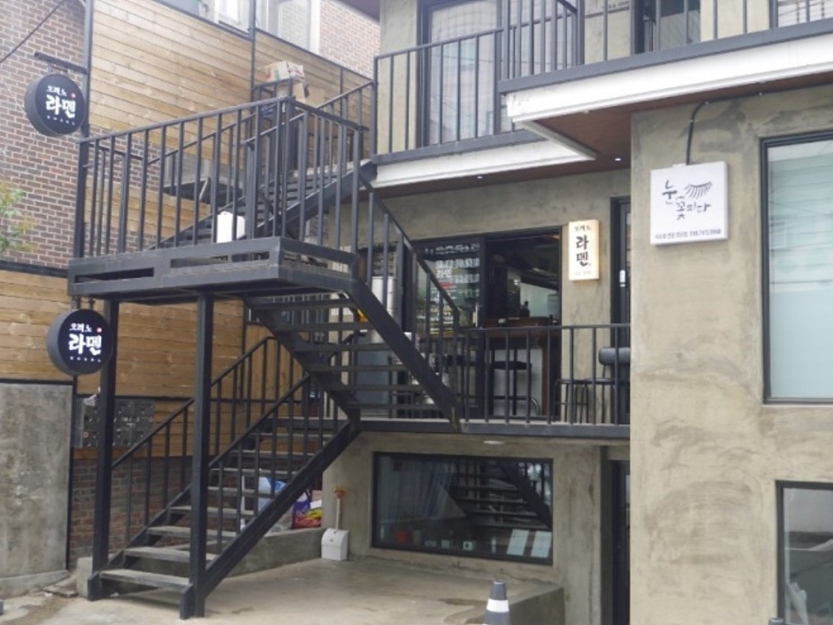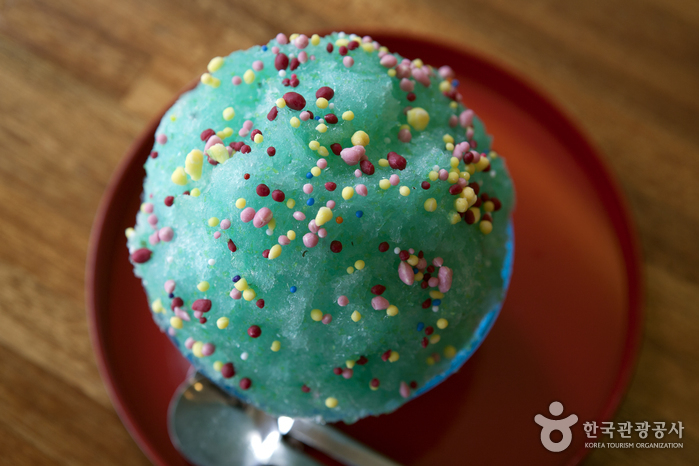Worksout - Hongdae Ryse Branch [Tax Refund Shop] (웍스아웃 라이즈홍대)
9.6Km 2024-04-19
130, Yanghwa-ro, Mapo-gu, Seoul
-
SIDE NOTE CLUB - RYSE (라이즈 호텔 사이드 노트 클럽)
9.6Km 2024-03-15
130 Yanghwa-ro, Mapo-gu, Seoul
This cocktail bar is located on the 15th floor of RYSE, a hotel near Hongik University. It serves contemporary reinterpretations of classical cocktails and its signature cocktails, including Peanut Butter Delight, Cheese in a Trap, and The Bitter Bliss, which feature interesting ingredients such as homemade peanut bourbon, cream cheese, and preserved omija. Its open rooftop is also very popular. At night, patrons can enjoy their cocktail with the light from old-fashioned light bulbs, the city lights from the Hongdae area, and the view of Seoul beyond.
Yeonnam Pharmacy [Tax Refund Shop] (연남약국)
9.6Km 2024-04-16
1F, #103, 31, Yanghwa-ro 21-gil, Mapo-gu, Seoul
-
Enter 6 - Cheonho Station Branch [Tax Refund Shop] (㈜엔터식스패션쇼핑몰 천호역점)
9.6Km 2024-04-19
B1, Cheonho Station of Subway Line 5, 8, 997, Cheonho-daero, Gangdong-gu, Seoul
-
Club Espresso (클럽에스프레소)
9.6Km 2024-02-20
132 Changuimun-ro, Jongno-gu, Seoul
Club Espresso is a café that opened in 1990, constructed with red bricks. They roast their own coffee beans, offering a diverse coffee menu. The Moon Blend, a blend of Colombian, Brazilian, Ethiopian, and Guatemalan beans, is a favorite among regulars and is made with the coffee bean ratio favored by former President Moon Jae-in. Nearby attractions include the Yun Dongju Hill (Cheongun Park) and the Yun Dong-ju Literary Museum, dedicated to the poet beloved by Koreans.
Orenoramen Main Store (오레노라멘 본점)
9.6Km 2024-02-22
14 Dongmak-ro 6-gil, Mapo-gu, Seoul
Orenoramen is a popular ramen spot near Hapjeong Station. Their signature dish is the toripaitan ramen (chicken broth ramen), featuring a rich broth made from chicken and chewy noodles. Additionally, their karapaitan ramen (spicy chicken broth ramen), which adds a spicy kick to the flavor, is also a popular choice. Customers can also enjoy additional toppings such as char siu and eggs with their ramen.
Lens Me - Sangsu Café Street Branch [Tax Refund Shop] (렌즈미상수카페거리점)
9.6Km 2024-04-22
65, Yanghwa-ro 6-gil, Mapo-gu, Seoul
-
Boobing (부빙)
9.6Km 2024-01-12
136 Changuimun-ro, Jongno-gu, Seoul
Boobing is short for "Buam-dong bingsu" (shaved ice). As such, it is a shaved ice restaurant that always has a long waiting line on weekdays or weekends. The main menu item is pat bingsu (shaved ice with red beans), made with red beans that are provided by a bean produce. They also serve their own original bingsu desserts that use ingredients like melon, mint chocolate, and gold pineapple. Their signature menu is Chodang corn bingsu, made with finely ground corn with milk ice on top. The cafe has a one bingsu order per person policy.
Line Friends Flagship Store - Hongdae Branch [Tax Refund Shop] (라인프렌즈홍대플래그십스토어)
9.6Km 2024-07-25
141, Yanghwa-ro, Mapo-gu, Seoul
-
![Worksout - Hongdae Ryse Branch [Tax Refund Shop] (웍스아웃 라이즈홍대)](http://tong.visitkorea.or.kr/cms/resource/71/2889571_image2_1.jpg)

![Doctor Petit [Tax Refund Shop] (닥터쁘띠의원)](http://tong.visitkorea.or.kr/cms/resource/86/3314486_image2_1.jpg)



![Lens Me - Sangsu Café Street Branch [Tax Refund Shop] (렌즈미상수카페거리점)](http://tong.visitkorea.or.kr/cms/resource/99/2887799_image2_1.jpg)

![Line Friends Flagship Store - Hongdae Branch [Tax Refund Shop] (라인프렌즈홍대플래그십스토어)](http://tong.visitkorea.or.kr/cms/resource/19/3314119_image2_1.jpg)
 English
English
 한국어
한국어 日本語
日本語 中文(简体)
中文(简体) Deutsch
Deutsch Français
Français Español
Español Русский
Русский